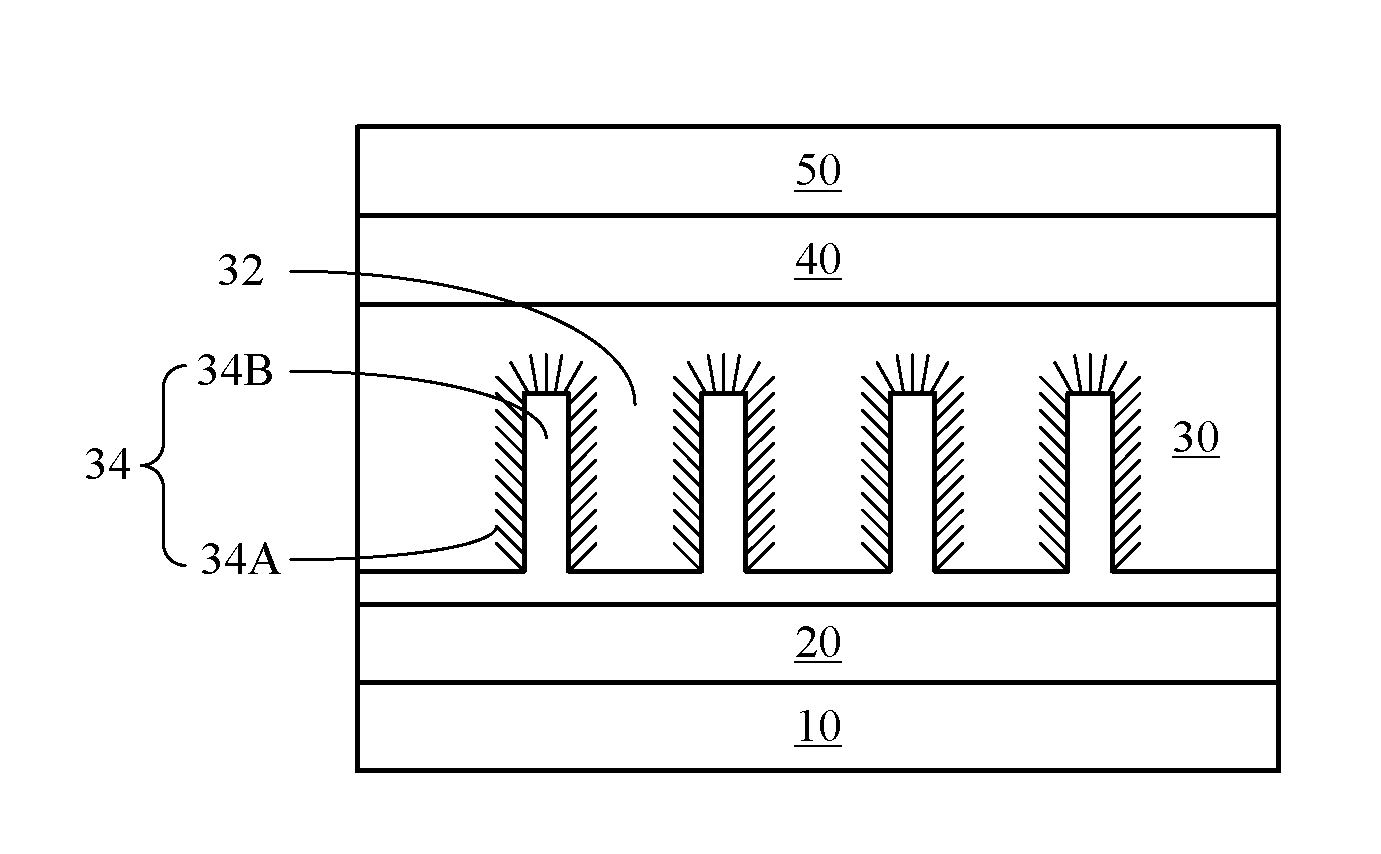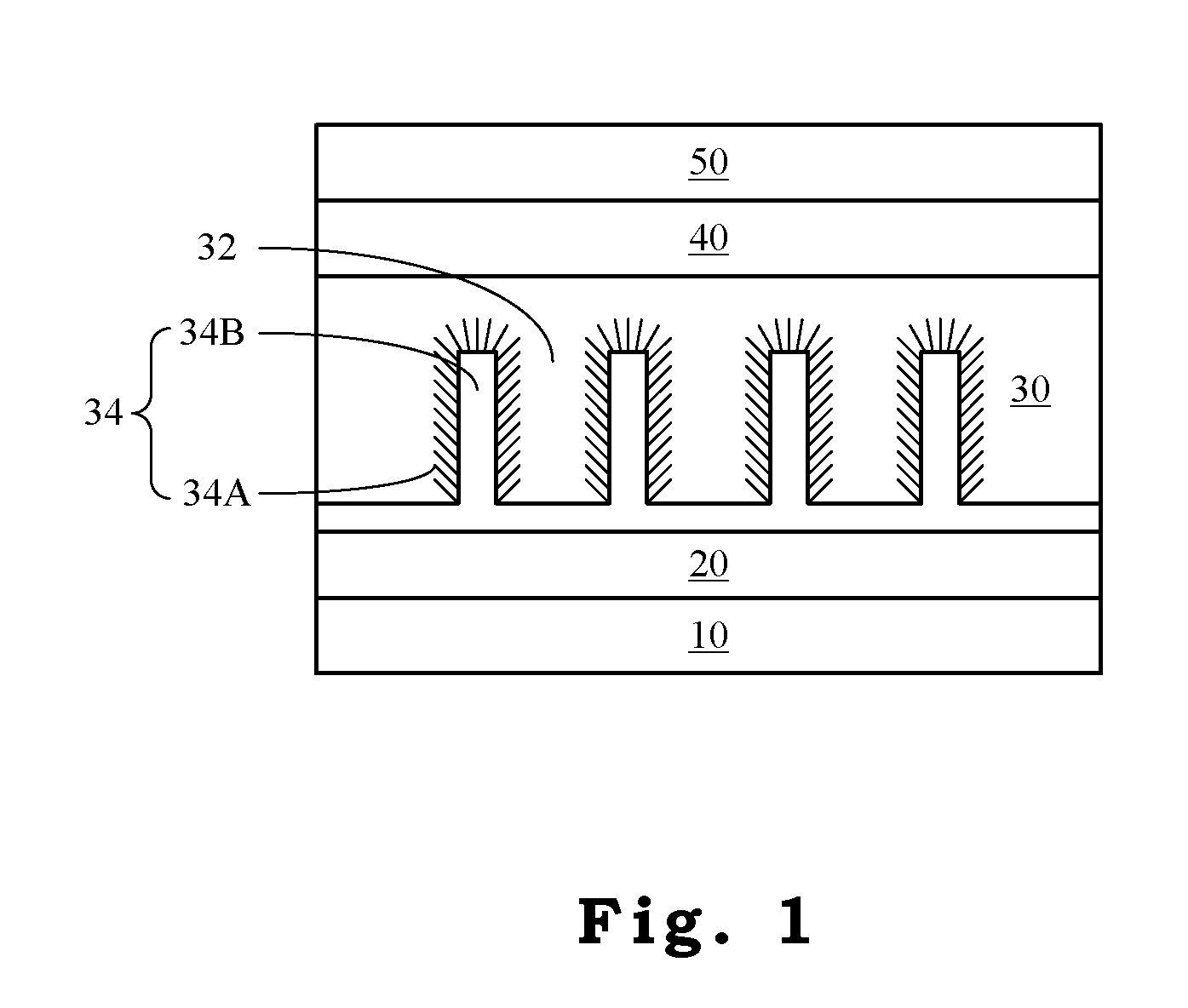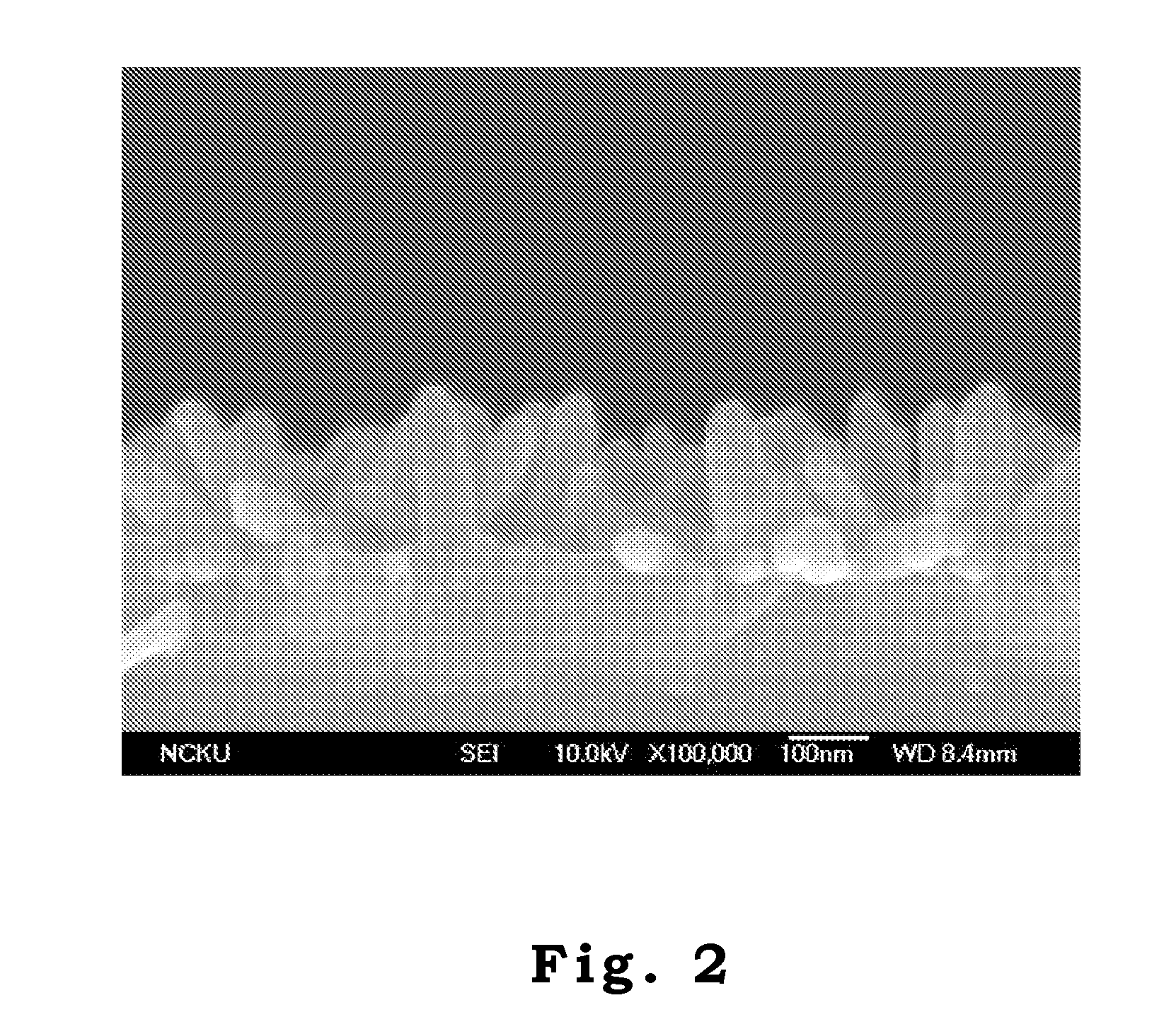Solar Cell Having Tree-Like Nanostructure and Method for Preparing the Same
- Summary
- Abstract
- Description
- Claims
- Application Information
AI Technical Summary
Benefits of technology
Problems solved by technology
Method used
Image
Examples
example 1
Forming Zinc Oxide Trunk Part Array
[0037]A conducting Au metal layer with a thickness of about 10 nm is formed on an ITO glass substrate by DC sputtering. Then, ZnO trunk part arrays are grown on the Au-coated ITO substrate by pulsed current electrolysis method at 80° C. If the ITO cathode is used as the working electrode in the current electrolysis method to in-situ form the trunk parts from ITO cathode, the trunk parts can not be uniformly formed. Thus, a conducting metal layer is coated as the working electrode in order to have the distribution of charges uniform so as to in-situ form the trunk parts regularly. The substrate, a platinum wire and an Ag / AgCl electrode are utilized as the working, the counter and the reference electrodes, respectively, in the electrochemical system. A 0.0025M aqueous solution of Zn (NO3)2 is employed to be the electrolyte. A pulsed wave with a pulse length and a pulse period of 0.01 and 0.1 s, respectively, are used for the growth of ZnO trunk part ...
example 2
Forming Titanium Oxide Branch Part
[0038]High aspect ratio anatase TiO2 branch parts are synthesized by the sol-gel method with hydrolysis of titanium tetraisopropoxide as described in Nanotechnology, 17, 5781, (2006) by Y. T. Lin, T. W. Zeng, W. Z. Lai, C. W. Chen, Y. Y. Lin, Y. S. Chang, W. F. Su. FIG. 3 shows the high-resolution transmission electron microscopy (HRTEM) image of TiO2 branch parts where the dimension of TiO2 branch parts is about 5 nm in diameter and 20 nm in length. The P3HT solution is prepared by dissolving conjugate polymer P3HT (Aldrich, USA) in chloroform. The mixture solution with 50 wt % TiO2 branch parts is obtained by mixing the required amount of TiO2 branch parts with the P3HT solution. By spin coating, the mixture solution is infiltrated in the cavities between ZnO trunk part arrays for TiO2 branch parts to deposit on the ZnO trunk parts. The conjugate polymer P3HT has hole transport and light absorbing functions.
example 3
Preparing a Solar Cell Having a Tree-Like Nanostructure
[0039]In air, a PEDOT:PSS layer with a thickness of 50 nm is coated on the device formed in example 2 by spin coating. PEDOT:PSS material has high conductivity and thus can reduce interface resistance. In addition, it can fill up gaps to have smooth surface. After the PEDOT:PSS coating process is finished, it is baked at 120° C. under vacuum for 6 hours. Finally, at a pressure of 2×10−6 torr, gold (Au) is evaporated to form a gold layer as the anode.
Result 1
[0040]The time-resolved photoluminescence spectra are obtained by a time-correlated single photon counting (TCSPC) spectrometer (Picoquant, Inc.). A pulse laser (375 nm) with an average power of 1 mW operating at 40 MHz with duration of 70 ps is used for excitation. The current-voltage measurement for the device prepared in example 3 is obtained by using a solar simulator (Oriel Inc.) with the A.M.1.5 filter. Transient photocurrent measurements are performed by a frequency-tr...
PUM
| Property | Measurement | Unit |
|---|---|---|
| Length | aaaaa | aaaaa |
| Diameter | aaaaa | aaaaa |
| Diameter | aaaaa | aaaaa |
Abstract
Description
Claims
Application Information
 Login to View More
Login to View More - R&D
- Intellectual Property
- Life Sciences
- Materials
- Tech Scout
- Unparalleled Data Quality
- Higher Quality Content
- 60% Fewer Hallucinations
Browse by: Latest US Patents, China's latest patents, Technical Efficacy Thesaurus, Application Domain, Technology Topic, Popular Technical Reports.
© 2025 PatSnap. All rights reserved.Legal|Privacy policy|Modern Slavery Act Transparency Statement|Sitemap|About US| Contact US: help@patsnap.com



